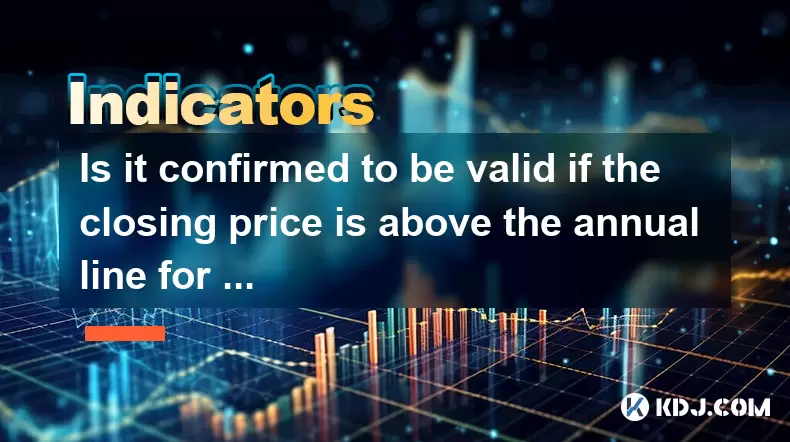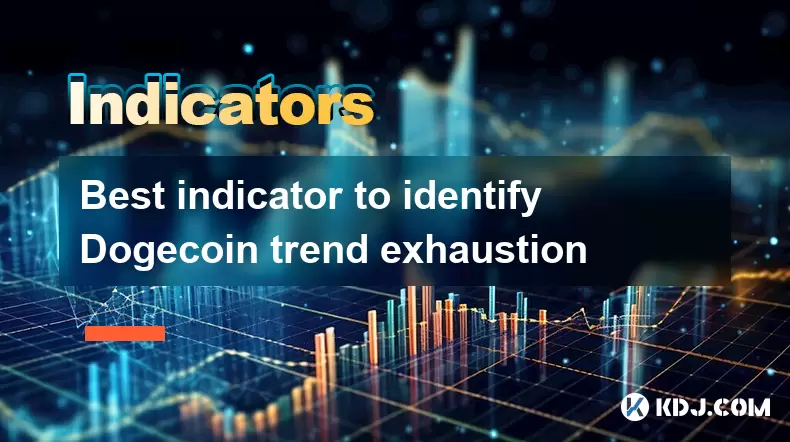-
 Bitcoin
Bitcoin $108,562.4295
0.46% -
 Ethereum
Ethereum $2,533.9553
1.52% -
 Tether USDt
Tether USDt $1.0002
-0.01% -
 XRP
XRP $2.2542
2.23% -
 BNB
BNB $662.4567
1.48% -
 Solana
Solana $151.4114
3.48% -
 USDC
USDC $0.9999
0.00% -
 TRON
TRON $0.2860
0.91% -
 Dogecoin
Dogecoin $0.1685
3.72% -
 Cardano
Cardano $0.5809
1.63% -
 Hyperliquid
Hyperliquid $39.2916
1.85% -
 Sui
Sui $2.8874
0.85% -
 Bitcoin Cash
Bitcoin Cash $496.5801
2.72% -
 Chainlink
Chainlink $13.3582
2.48% -
 UNUS SED LEO
UNUS SED LEO $9.0279
0.07% -
 Avalanche
Avalanche $18.0773
2.30% -
 Stellar
Stellar $0.2426
3.05% -
 Toncoin
Toncoin $2.9086
6.01% -
 Shiba Inu
Shiba Inu $0.0...01170
2.97% -
 Hedera
Hedera $0.1587
3.47% -
 Litecoin
Litecoin $87.4596
1.13% -
 Monero
Monero $317.0425
0.73% -
 Polkadot
Polkadot $3.3778
1.90% -
 Dai
Dai $0.9999
-0.01% -
 Ethena USDe
Ethena USDe $1.0001
-0.01% -
 Bitget Token
Bitget Token $4.4095
0.63% -
 Uniswap
Uniswap $7.3593
6.80% -
 Pepe
Pepe $0.0...09910
3.64% -
 Aave
Aave $274.7388
2.68% -
 Pi
Pi $0.4607
0.48%
Is it confirmed to be valid if the closing price is above the annual line for five consecutive days after the volume breaks through the annual line?
A cryptocurrency closing above its 200-day moving average for five consecutive days after a volume breakout may signal a strong, sustainable uptrend.
Jul 01, 2025 at 04:14 am

Understanding the Annual Line in Cryptocurrency Trading
In cryptocurrency trading, the annual line refers to the 200-day moving average (200DMA). This indicator is widely used by traders and analysts to determine long-term trends. When the price of a cryptocurrency closes above this line consistently, it's often seen as a sign of strength. However, the validity of such signals also depends on other factors like volume and market sentiment.
The annual line acts as a key support or resistance level in technical analysis.
Traders pay close attention to how prices interact with this line because crossing above or below it can indicate potential trend reversals. The 200DMA is not just a simple mathematical calculation—it’s a psychological marker that many institutional and retail investors follow.
Volume Breakthrough: What It Signifies
Before discussing the closing price, it's important to understand what a volume breakthrough means in crypto trading. A breakout in volume occurs when trading volume exceeds its 200-day average significantly. This often precedes major price movements, either up or down.
- High volume during a breakout suggests strong participation from buyers or sellers.
- It indicates increased interest and potentially the start of a new trend.
- Volume should be analyzed alongside price action for confirmation.
A volume spike alone doesn't guarantee a bullish trend. It must coincide with positive price movement to confirm strength. For instance, if volume surges while the price remains flat or declines, it could signal profit-taking or distribution.
Price Closing Above the Annual Line: Why Five Days Matters
When the price of a cryptocurrency closes above the 200DMA for five consecutive days, it may suggest a shift in momentum. This isn’t just a one-off event—it shows persistence and sustained demand over time.
- Five-day consistency demonstrates that bulls are in control and pushing the price higher regularly.
- It filters out false breakouts caused by short-lived spikes or manipulations.
- This pattern helps traders avoid premature entries based on temporary volatility.
However, even with five days of closes above the 200DMA, it’s crucial to look at other indicators and broader market conditions before confirming the trend.
Combining Volume and Price Action: Key Validation Factors
For a breakout to be considered valid, both price and volume need to align. If volume breaks through its annual average first, followed by consistent closes above the 200DMA, it increases the likelihood of a sustainable uptrend.
- Volume leading price suggests accumulation or distribution before the trend becomes visible.
- Price following volume confirms that the initial buying pressure was real and not just noise.
- Traders often wait for a pullback after the breakout to enter at better levels.
This combination is particularly useful in volatile markets like cryptocurrencies, where sudden moves can mislead inexperienced traders.
How to Confirm Validity Using Technical Tools
To verify whether the five-day close above the 200DMA is valid after a volume breakout, you can use several tools:
- Plot the 200DMA and daily volume on your charting platform (e.g., TradingView).
- Mark the day when volume crosses above its 200-day average.
- Check the next five candlesticks to ensure they all close above the 200DMA.
- Look for increasing open interest (if using futures) or on-chain metrics showing accumulation.
Some platforms allow you to create alerts for these events, helping automate part of the validation process.
Common Pitfalls to Avoid
Even with a seemingly solid setup, there are pitfalls traders should be cautious of:
- Assuming a breakout is confirmed without checking for fake-outs or whale manipulation.
- Relying solely on technical indicators without considering macroeconomic or news-driven events.
- Ignoring divergences between different timeframes (e.g., weekly vs. daily charts).
Also, not every volume surge followed by a price move will result in a sustained trend. Markets can retest the 200DMA multiple times before establishing direction.
Frequently Asked Questions
Q1: Can I trade solely based on the 200DMA and volume breakout?
No single indicator should be used in isolation. While the 200DMA and volume provide valuable insights, combining them with other tools like RSI, MACD, or Fibonacci retracements improves accuracy.
Q2: Does the same rule apply to altcoins as it does to Bitcoin?
Yes, but with caution. Altcoins tend to be more volatile, so false signals are more common. Always assess the broader market context before making decisions.
Q3: How do I calculate the 200-day moving average manually?
Add the closing prices for the last 200 days, then divide by 200. Most charting platforms automatically plot this for you, saving manual effort.
Q4: Is it necessary for all five days to close above the 200DMA exactly after the volume breakout?
Ideally, yes. However, some flexibility is acceptable if the breakout and price action occur within a few days of each other. Consistency matters more than exact timing.
Disclaimer:info@kdj.com
The information provided is not trading advice. kdj.com does not assume any responsibility for any investments made based on the information provided in this article. Cryptocurrencies are highly volatile and it is highly recommended that you invest with caution after thorough research!
If you believe that the content used on this website infringes your copyright, please contact us immediately (info@kdj.com) and we will delete it promptly.
- Drake, Bitcoin, and Mainstream Music: A New Era?
- 2025-07-07 12:30:12
- Meme Coins, ROI Potential, 2025 Selection: What's Hot and What's Not?
- 2025-07-07 12:30:12
- Bitcoin, Ethereum, and Dogecoin: Navigating the Crypto Landscape in a Wild Week
- 2025-07-07 12:50:11
- Meme Coin Mania: Explosive Picks and Top Buys in 2025
- 2025-07-07 12:50:11
- Bitcoin, Ethereum, and the Cryptocurrency Market: Riding the Wave of Innovation
- 2025-07-07 12:55:12
- Elon Musk, Bitcoin, and Crypto News: A 2025 Perspective
- 2025-07-07 13:10:12
Related knowledge

How to trade Dogecoin based on funding rates and open interest
Jul 07,2025 at 02:49am
Understanding Funding Rates in Dogecoin TradingFunding rates are periodic payments made to either long or short traders depending on the prevailing market conditions. In perpetual futures contracts, these rates help align the price of the contract with the spot price of Dogecoin (DOGE). When funding rates are positive, it indicates that long positions p...

How to spot manipulation on the Dogecoin chart
Jul 06,2025 at 12:35pm
Understanding the Basics of Chart ManipulationChart manipulation in the cryptocurrency space, particularly with Dogecoin, refers to artificial price movements caused by coordinated trading activities rather than genuine market demand. These manipulations are often executed by large holders (commonly known as whales) or organized groups aiming to mislead...

Bitcoincoin market structure break explained
Jul 07,2025 at 02:51am
Understanding the Dogecoin Market StructureDogecoin, initially created as a meme-based cryptocurrency, has evolved into a significant player in the crypto market. Its market structure refers to how price action is organized over time, including support and resistance levels, trend lines, and patterns that help traders anticipate future movements. A mark...

What is the significance of a Dogecoin engulfing candle pattern
Jul 06,2025 at 06:36am
Understanding the Engulfing Candle Pattern in CryptocurrencyThe engulfing candle pattern is a significant technical analysis tool used by traders to identify potential trend reversals in financial markets, including cryptocurrencies like Dogecoin. This pattern typically consists of two candles: the first one is relatively small and indicates the current...

Best indicator to identify Dogecoin trend exhaustion
Jul 07,2025 at 11:29am
Understanding Dogecoin Trend ExhaustionIdentifying trend exhaustion in Dogecoin (DOGE) is crucial for traders aiming to avoid late entries or potential reversals. Trend exhaustion occurs when a prevailing price movement loses momentum, often leading to a consolidation phase or reversal. In the volatile world of cryptocurrencies like Dogecoin, understand...

Dogecoin monthly chart analysis for long term investors
Jul 06,2025 at 10:08am
Understanding the Dogecoin Monthly ChartFor long-term investors, analyzing the monthly chart of Dogecoin (DOGE) provides a macro view of its price behavior over extended periods. The monthly chart captures major trends, key resistance and support levels, and potential reversal zones that are crucial for strategic investment planning. Unlike daily or hou...

How to trade Dogecoin based on funding rates and open interest
Jul 07,2025 at 02:49am
Understanding Funding Rates in Dogecoin TradingFunding rates are periodic payments made to either long or short traders depending on the prevailing market conditions. In perpetual futures contracts, these rates help align the price of the contract with the spot price of Dogecoin (DOGE). When funding rates are positive, it indicates that long positions p...

How to spot manipulation on the Dogecoin chart
Jul 06,2025 at 12:35pm
Understanding the Basics of Chart ManipulationChart manipulation in the cryptocurrency space, particularly with Dogecoin, refers to artificial price movements caused by coordinated trading activities rather than genuine market demand. These manipulations are often executed by large holders (commonly known as whales) or organized groups aiming to mislead...

Bitcoincoin market structure break explained
Jul 07,2025 at 02:51am
Understanding the Dogecoin Market StructureDogecoin, initially created as a meme-based cryptocurrency, has evolved into a significant player in the crypto market. Its market structure refers to how price action is organized over time, including support and resistance levels, trend lines, and patterns that help traders anticipate future movements. A mark...

What is the significance of a Dogecoin engulfing candle pattern
Jul 06,2025 at 06:36am
Understanding the Engulfing Candle Pattern in CryptocurrencyThe engulfing candle pattern is a significant technical analysis tool used by traders to identify potential trend reversals in financial markets, including cryptocurrencies like Dogecoin. This pattern typically consists of two candles: the first one is relatively small and indicates the current...

Best indicator to identify Dogecoin trend exhaustion
Jul 07,2025 at 11:29am
Understanding Dogecoin Trend ExhaustionIdentifying trend exhaustion in Dogecoin (DOGE) is crucial for traders aiming to avoid late entries or potential reversals. Trend exhaustion occurs when a prevailing price movement loses momentum, often leading to a consolidation phase or reversal. In the volatile world of cryptocurrencies like Dogecoin, understand...

Dogecoin monthly chart analysis for long term investors
Jul 06,2025 at 10:08am
Understanding the Dogecoin Monthly ChartFor long-term investors, analyzing the monthly chart of Dogecoin (DOGE) provides a macro view of its price behavior over extended periods. The monthly chart captures major trends, key resistance and support levels, and potential reversal zones that are crucial for strategic investment planning. Unlike daily or hou...
See all articles

























































































